Flagging some places where disclosure gaps happen and how you can start reading labels beauty labels like a pro. Plus get your Easy Label Reading Checklist!
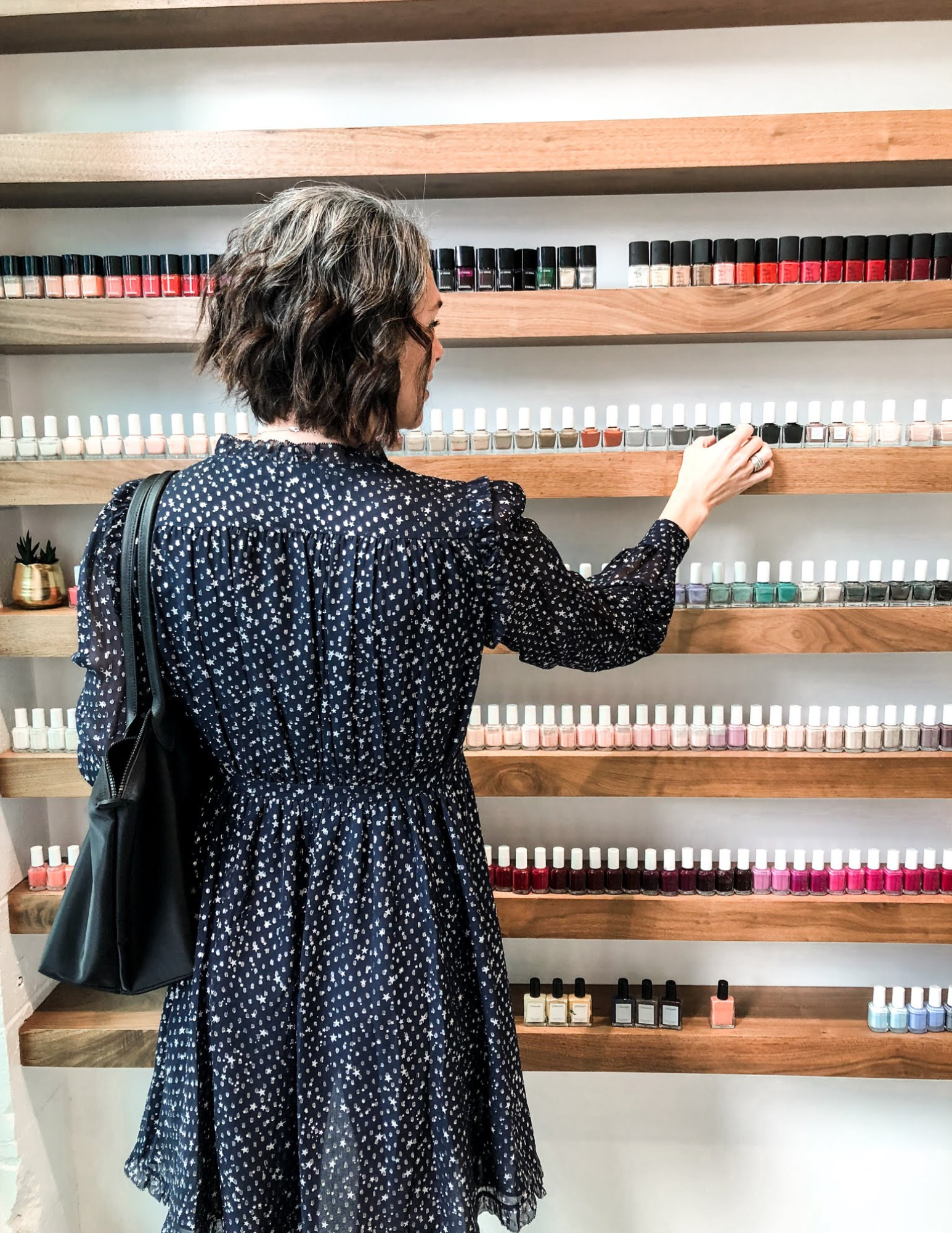
Written by Lisa Fennessy
Reviewed by Kate Noonan, Molecular Biologist and Cosmetic Chemist
- Categories of Hidden Ingredients
- Hidden Ingredients on Labels
- Ways Hidden Ingredients Make their Way into Products
- Easy Label Reading Checklist
One really important way we define clean beauty is by reading labels and studying ingredients. The challenge here is “clean beauty” is a living, evolving and in some ways, subjective concept. Some certifications call one preservative acceptable while other certifications don’t. One day there is no cellular extraction, the next day there is. Yesterday there was an abundance of this botanical and today there is not. Everyday, the clean beauty landscape changes as new formulation methods, extraction methods and new research come to life.
But at this point in time, clean beauty is not meant to be defined. Clean beauty is the movement to push the cosmetics industry to higher standards.
More than ever I believe clean beauty and choosing clean is looking at a brand as a whole over reading a specific label. Labels are still wicked important but as I’ll show you in a min, they can be limiting. At some point, we need to extend trust to brands who are doing it right because it becomes impossible as consumers to research each ingredient inside and out.
But how do we trust brands when we’ve been deceived via greenwashing and lies for so many years? First and foremost we look at a brand’s ingredients and then, just as critically, we look at their ethos, ethics, values, mission and how they align themselves with the world. We look at the brand as a whole. We ask big, hard questions and when everything comes back good? We trust.
Some examples of brands that I trust like this are Laurel, OSMIA, Maya Chia, True Botanicals. Over the years, I’ve come to know these brands. We keep in touch, I’ve been to their studios, we’ve gone out to dinner, I test their unreleased products, they answer my questions… I know what they stand for and what they value, I’ve seen them formulate with my own eyes and when they release a new product, I know they’ve taken into consideration everything we are about to talk about below.
RELATED: Read more on how to understand beauty & personal care certifications here.
If you are curious about clean beauty and want to get started, here are 40 online clean beauty stores plus ways to save.
But trust is the very last step. First? When we find a brand we want to try, we scope out its ingredients. Below are 7 ways ingredients can be hidden on clean beauty labels and then I’ll give you some concrete examples of each in the next section.
Categories of hidden ingredients
1. Stabilized materials – When raw materials are unstable, manufactures will add a stabilizer or a preservative to them before shipping them out as raw materials to formulators. Typically these stabilizers are not listed on product ingredient labels.
Certain stabilizers have been in use since the 1970’s before adequate research was conducted on their safety. Some of these are still used due to gaps in regulation, cost concerns, or lobbying efforts. More of these problematic ingredients are up for review in California as of this year.
2. Adulterated materials – This is when undisclosed ingredients are added to raw materials. This is a huge topic with essential oils but it applies across the board. These are also typically not listed on ingredient labels.
3. Category materials – This is a term I made up but essentially it means when you see an ingredient category on a label like “fragrance” or “surfactants” or “essential oils” but the specific ingredient(s) are not being disclosed.
4. Compound materials – When two or more ingredients are used to make a new ingredient. Typically, only the final ingredient is listed, not it’s parts.
5. Chemical reactions – When ingredients interact creating byproduct ingredients that are typically not listed on ingredient labels.
6. INCI Naming Limitations – INCI is an international naming system brands use on their ingredient lists so their products can be sold internationally. Like French or English, consider it the international “language of cosmetics.” But the catch is, you can have an INCI name of Coco-Glucoside, for example, and then have several brand-name or manufacturers who make Coco-Glucoside each using varying components.
7. Unintentional adulteration – This is also a term I made up but essentially this is when an ingredient is created pure and then contaminated in some way. I talked to a formulator who’s organic rosehip oil tested positive for PFAS and no one could figure out why. Turns out, everything was sourced immaculately but the final material was housed and shipped in large plastic vats which ended up leaching into the raw material.
Let’s take a look at how these play out. Here are 12 examples of ingredients you will see on labels that don’t tell the full ingredient story.
Hidden ingredients on labels
1. Emulsifying Wax: Emulsifying wax is composed of Cetearyl Alcohol (and) ethylene oxide-containing ingredients: Polysorbate 60 or PEG-40 Stearate. Polysorbate 60 has 378 ppm 1,4-dioxane and this has been found to absorb into skin (Junyaprasert et al. 2012). 1,4 dioxane is a genotoxic carcinogen that causes, “carcinogenic responses in the liver across multiple species and routes of exposure” (Pollitt KJ et al. 2019). Watch out for this one.
2. Avocado butter: Certified USDA or ECOCERT Organic Avocado Butter is made up of organic avocado oil and organic shea butter. Options that don’t carry the USDA Organic certification either include soybean or hydrogenated vegetable oil (like canola) plus beeswax (EU Cosmetic Database Cosing). This also applies to similar ingredients like Apricot Butter, Apricot Wax, Argan Butter, Avocado Wax, Jojoba Butter, Coffee Butter, etc.
3. Fragrance: Fragrance is essentially a black box of ingredients. The IFRA recorded a whopping 3,999 components it doled out to fragrance houses in 2015. And this was 5 years ago so we can imagine what that number looks like now. Included in this list are benign ingredients like essential oils but there are also a host of concerning ingredients like Sterene, phthalates, parabens and more.
4. Vegetable Glycerine: Glycerine is used as an ingredient and humectant for cosmetics, creams, lotions, oral care, toothpaste and mouthwash as well as bar and liquid soap. It is vegetable-based and can be (but not always) made from Palm Oil or Palm Kernel Oil. Unethical Palm Oil contributes to deforestation, species extinction, human rights abuses & climate change.
5. Sea Kelp Extract: The fact is, some actives need to be preserved. Sea Kelp Extract, for example, is often a percentage of extract dissolved in a carrier like glycerin or water. If water is used, a preservative is added. Brands can choose to list that preservative or not.
6. Milk Ceramides or Lacto-Ceramides: The only manufacturer of these ingredients uses Chlorhexidine digluconate (CHG) as a preservative and it does not appear on product INCI lists due to a US loophole. Chlorhexidine is problematic for its strong skin irritancy and because it’s use is known to select for resistant bacteria (Wand et al. 2017).
Check out the example below (photo). Molecular Biologist and Cosmetic Chemist, Kate Noonan, explains, “ECOCERT certified preservatives with excellent and broad efficacy that don’t have the issues chlorhexidine has include: rose-derived Phenethyl alcohol, basil-derived p-Anisic acid, and coconut-derived Glyceryl caprylate and Glyceryl undecylate. These natural preservatives allow clean beauty products to exceed product preservation requirements during USP/PCPC/ISO preservative efficacy testing (PET). They outperform chlorhexidine and parabens, both of which regularly fail during PET in a variety of formulas. Chlorhexidine and parabens are cheaper than these ECOCERT preservatives but safety should come first.”

7. Caprylic/Capric Triglycerides: This can be made from several ingredients including coconut oil, palm kernel oil, MCT oil and is usually mixed with glycerol from vegetable oil sources. It is a good ingredient and the best sources are USDA or ECOCERT Organic certified because this means no hexane was used to extract the coconut or palm oil.
8. Imidazolidinyl Urea, diazolidinyl urea, polyquaterium-15, DMDM Hydantoin: These are all considered “formaldehyde-releasers” because formaldehyde has already released and is sitting in the product by the time it hits the shelf. Formaldehyde is a Category 1 Known Human Carcinogen in the WHO’s IARC Database. Human epidemiological data shows negative pregnancy outcomes when pregnant women are exposed to formaldehyde-releasers in cosmetics (Aronson JK et al. 2014).
9. Disodium Laureth Sulfosuccinate: Used in some seemingly natural brands, this is an ingredient that is always preserved with DMDM Hydantoin (see #8 above) when it is shipped as a raw material. Brands are not required to list this formaldehyde-releaser in the US (EU Cosmetic Ingredient Database).
10. Laureth-23: Laureth-23 contains 23 moles of ethylene oxide. Ethylene oxide is produced by “cracking” petroleum and it is a Category 1 Known Human Carcinogen in the WHO’s IARC Database. Laureth-23 at just 1% is known to cause follicular papular pimples (Kimura M et al. 2000).
11. D&C red no. 40, D&C red no. 30, D&C red no. 27, D&C red no. 17, D&C red no. 9, FD&C Yellow, No. 5, FD&C Red No. 2, and FD&C Red No. 4: These are dyes derived from Coal Tar. Coal Tar is a known human carcinogen. (WHO IARC).
12. Essential Oils: Essential oils can be adulterated with synthetic aroma chemicals or isolates to enhance scent profiles or diluted with carrier oils for example. Look for USDA/ECOCERT Certified Organic essential oils which are not adulterated. A lot of universities conduct surveillance on essential oil adulteration and they find the non-organic sources have adulteration like palm rose in rose oil, lime, lemon or bergamot.
4 other ways hidden ingredients make their way into products…
1. 1,4 dioxane
The EPA has identified 1,4 dioxane as a likely human carcinogen. 1,4 dioxane is a clear liquid that is highly miscible in water. It has historically been used as a solvent stabilizer and is currently used for a wide variety of industrial and manufacturing purposes. The compound can be found in industrial solvents, paint strippers, and varnishes and is often produced as a byproduct of chemical processes to manufacture soaps, plastics, and other consumer products.
It’s also been linked to miscarage, breast milk transfer, adverse nervous system effects, cancer and even death. 1,4-dioxane is a Category 2B Carcinogen: “IARC Monographs Volume 71” (PDF). International Agency for Research on Cancer. Retrieved 11 July 2014.
The problem is, it’s not listed on ingredient labels because it’s the byproduct of a chemical reaction and 99.9% of the time it’s not intentionally added to formulas.
Fortunately, states like New York are establishing new laws like 4389-B/A. 6295-A (December 2019) which prohibits the sale of household cleaning products containing 1,4-dioxane and limits the sale of cosmetic and personal care products with certain levels of 1,4-dioxane. But this practice is not widespread…yet.
Takeaway: The following are what to look for on a label. These have a high ppm of 1,4 dioxane and moles of Category 1 Human Carcinogen ethylene oxide (EO):
- Polysorbates (20, 40, 60, 80)
- Laureth-23
- Ceteareth-20
- PEG 16 lanolin
- PEG 200 dilaurate
- Sodium dodecyl sulfate
- PEG-20 Glyceryl Triisostearate
- PEG-10 Isostearate
2. Stabalizers
Stabilizers like BHT, BHA and parabens are sometimes added to raw materials to make them last longer. These can often be added to raw materials before formulators receive them. For example, Joe Formulator orders retinol, gets retinol, formulates with retinol and adds retinol to the ingredient list. What’s typically NOT added to the ingredient list is the BHT that was added to that retinol at the manufacturing level to stabilize it.
That being said, there is a growing move away from using BHA and BHT due to research exposing both their negative health effects and lack of performance compared to naturally derived antioxidants but this does not apply across the board yet.
With this in mind, formulators are not intentionally adding BHT to their product. They are adding “retinol” so 9 times out of 10 “BHT” won’t show up on an ingredient list. Grapefruit Seed Extract and Retinoids are two examples.
Grapefruit Seed Extract (GSE) – This is often a preserved material which can sometimes mean the addition of parabens and more. Check it out…
CITRICIDAL ® is one type of GSE that’s available to formulators. It’s also an example of an adulterated GSE.
This adulterated (GSE) has FDA and EU-banned triclosan and quaternary ammonium compounds from petroleum: “benzethonium chloride (2.5−176.9 mg/mL), benzalkonium chloride (138.2−236.3 mg/mL), together with smaller amounts of 4-hydroxybenzoic acid esters, benzoic acid, and salicylic acid” and methyl paraben (Ganzera et al. 2006, Takeoka et al. 2001, Sahlan et al. 2018, Avula et al. 2007). All of these were undisclosed and this is concerning.
Benzalkonium chloride and benzethonium chloride are severe human eye irritants and if used in an eye area cleanser post-cataract surgery, it will permanently damage the corneas (Ong K et al. 2019). These are also strong human skin irritants above 0.1%. Neurotoxicity, respiratory toxicity, immunotoxicity, and GI toxicity are also major issues (Sreevidya et al. 2018, Kennedy et al. 2001, McDonald et al. 2017).
Retinol – Retinol is another example of a possible preserved material. Usually BHA or BHT are used to preserve. More about retinol here.
Takeaway: These stabilizers vary from brand to brand and 9 times out of 10 it takes an email to the brand to clarify.
3. Extraction solvents
There are several ways to extract ingredients like cold pressing, steam distillation, CO2 extraction and more. One way in particular uses a solvent called hexane.
Hexane comes from crude petroleum oil refining and it is used to extract cosmetic and cooking oils like non-organic and non-cold pressed soybean, cottonseed, canola, and palm oil. Hexane is infamous for causing occupational nervous system damage in shoe factory workers. Non-organic essential oils that are absolutes can be extracted with hexane unless it is specifically stated that the extraction was with CO2 or ethanol. Oils extracted with hexane do have residual hexane because it is difficult to remove and this can irritate skin.
Meaning, this solvent will leave some residue behind in the finished product and most likely will not be included on the ingredient list.
Takeaway: If an oil doesn’t say “Certified Organic” or “Cold-pressed” then it was likely extracted with hexane. Check your Olive Oil, Soybean Oil, Palm Oil, Cottonseed Oil, Canola Oil, Sunflower Oil.
Any essential oil that isn’t organic, cold pressed, CO2 extracted, or alcohol-extracted is possibly extracted with hexane. I would ask the brand if it’s not specified. Hexane at minimum will cause skin irritation.
4. Inside out ingredients
This is a term I made up but the concept is real and you will see it in clean beauty. This is when ingredients that are NOT specifically added to a formula appear ON the ingredient list. I know, so weird.
Most of the time this happens with essential oil (EO) components. Some EO components are considered allergens and are required to be disclosed per EU Regulation (EC) No 1223/2009. This resource lists all 26 allergens that are required to be disclosed on labels in an easy-to-read format.
Examples I see the most are components of essential oils like Linalool, Limonene, Geraniol, Farnesol, Eugenol, etc. These components occur naturally within specific essential oils and formulators are not intentionally adding them in. For all the English majors in the house, it’s like saying; Vitamin C is to oranges as Linalool is to Ylang Ylang essential oil.
Sometimes the listing of Limonene at the end of an ingredient list is just to comply with the EU allergen statement because around 2-5% of people have contact dermatitis with a certain level of essential oil components on their skin. However, these components can also be isolated and used in higher doses than what is found in nature. This is done for several reasons. Isolates are commonly used to enhance scent notes and aromatic qualities in fragrances. While, in higher concentrations, isolates like d-Limonene can be used as an insecticide.
The point being, Linalool and Linalool* are typically two different ingredients and labels should differentiate between naturally occurring components and added isolates. You can see the difference between the two labels below:
Example of naturally occurring EO components in de Mamiel:
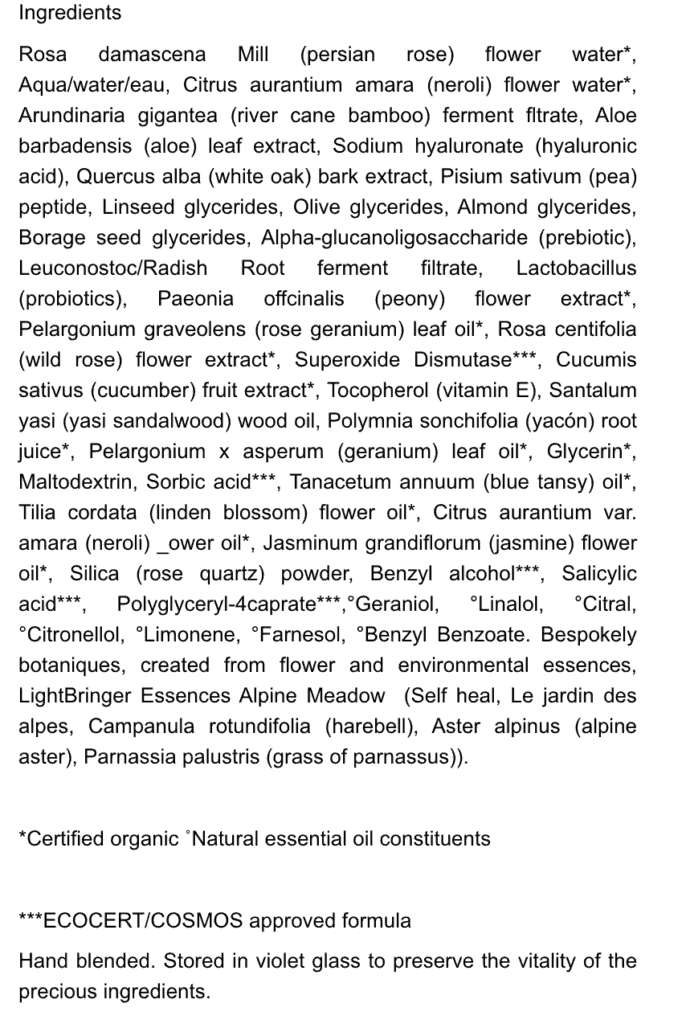
Example of what appears to be EO isolates in La Mer:
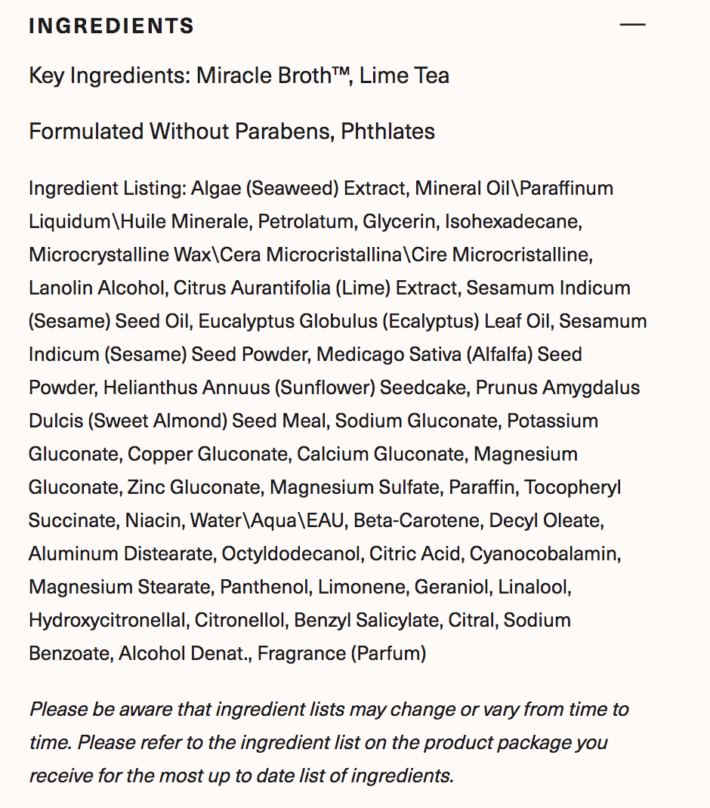
Takeaway: Look for some sort of distinction next to essential oil components to ensure they are naturally occurring as opposed to isolates.
Make sure to save or screen shot our Easy Label Reading Checklist below!
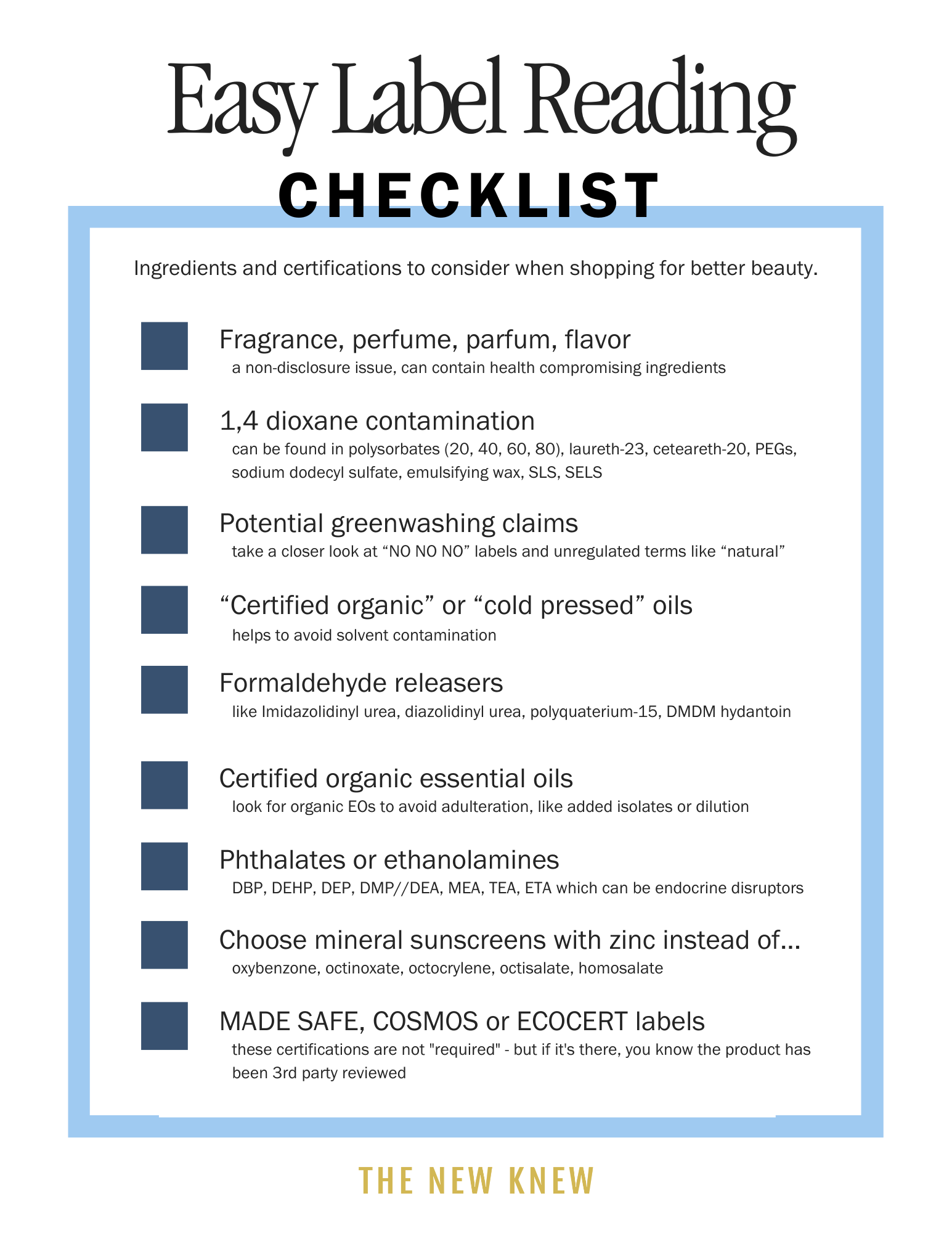
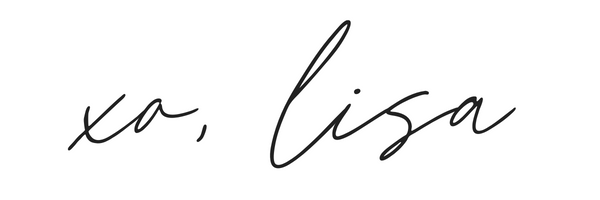
References (ABC order)
https://monographs.iarc.fr/wp-content/uploads/2018/09/ClassificationsAlphaOrder.pdf
https://ec.europa.eu/growth/sectors/cosmetics/cosing_en
Anderson SE, Shane H, Long C, Lukomska E, Meade BJ, Marshall NB. Evaluation of the irritancy and hypersensitivity potential following topical application of didecyldimethylammonium chloride. Journal of immunotoxicology. 2016 Jul 3;13(4):557-66.
Aronson JK. Antiseptic drugs and disinfectants. InSide Effects of Drugs Annual 2014 Jan 1 (Vol. 35, pp. 435-445). Elsevier.
B. Avula, S. Dentali and I. A. Khan.Pharmazie, pp. 62 : 593-596 (2007).
Black RE, Hurley FJ, Havery DC. Occurrence of 1, 4-dioxane in cosmetic raw materials and finished cosmetic products. Journal of AOAC international. 2001 May 1;84(3):666-70.
Campbell, A; Chapman, M (2008). Handbook of Poisoning in Dogs and Cats. John Wiley & Sons. p. 17. ISBN 978-0-470-69844-0. 2008.
Dart, R C (2004). Medical Toxicology (illustrated, revised ed.). Lippincott Williams & Wilkins. p. 125. ISBN 978-0-781-72845-4.
Ganzera M, Aberham A, Stuppner H. Development and validation of an HPLC/UV/MS method for simultaneous determination of 18 preservatives in grapefruit seed extract. Journal of agricultural and food chemistry. 2006 May 31;54(11):3768-72.
Junyaprasert VB, Singhsa P, Suksiriworapong J, Chantasart D. Physicochemical properties and skin permeation of Span 60/Tween 60 niosomes of ellagic acid. International journal of pharmaceutics. 2012 Feb 28;423(2):303-11.
Kennedy, D W; Bolger, W E; Zinreich, S J (2001). Diseases of the Sinuses Diagnosis and Management. B.C. Decker Inc. p. 162. ISBN 978-1-550-09045-1.
Kimura M, Kawada A. Follicular contact dermatitis due to polyoxyethylene laurylether. Journal of the American Academy of Dermatology. 2000 May 1;42(5):879-80.
Li J, Chaytor JL, Findlay B, McMullen LM, Smith DC, Vederas JC. Identification of didecyldimethylammonium salts and salicylic acid as antimicrobial compounds in commercial fermented radish kimchi. Journal of agricultural and food chemistry. 2015 Mar 25;63(11):3053-8.
McDonald, Valerie Alexandra. Evaluating Immunotoxicity of Quaternary Ammonium Compounds. Diss. Virginia Tech, 2017.
NIOSH Pocket Guide to Chemical Hazards. “#0237”. National Institute for Occupational Safety and Health (NIOSH).
Ong K, Ong L. Benzalkonium chloride corneal toxicity post-cataract surgery. Asian Journal of Ophthalmology. 2019;17(1):56-60.
Pollitt KJ, Kim JH, Peccia J, Elimelech M, Zhang Y, Charkoftaki G, Hodges B, Zucker I, Huang H, Deizel NC, Murphy K. 1, 4-Dioxane as an emerging water contaminant–State of the science and evaluation of research needs. Science of The Total Environment. 2019 Jun 28.
Sahlan M, Damayanti V, Tristantini D, Hermansyah H, Wijanarko A, Olivia Y. Antimicrobial activities of pomelo (Citrus maxima) seed and pulp ethanolic extract. InAIP Conference Proceedings 2018 Feb 13 (Vol. 1933, No. 1, p. 030002). AIP Publishing LLC.
Sreevidya VS, Lenz KA, Svoboda KR, Ma H. Benzalkonium chloride, benzethonium chloride, and chloroxylenol-Three replacement antimicrobials are more toxic than triclosan and triclocarban in two model organisms. Environmental pollution. 2018 Apr 1;235:814-24.
Takeoka G, Dao L, Wong RY, Lundin R, Mahoney N. Identification of benzethonium chloride in commercial grapefruit seed extracts. Journal of agricultural and food chemistry. 2001 Jul 16;49(7):3316-20.
Wand ME, Bock LJ, Bonney LC, Sutton JM. Mechanisms of increased resistance to chlorhexidine and cross-resistance to colistin following exposure of Klebsiella pneumoniae clinical isolates to chlorhexidine. Antimicrobial agents and chemotherapy. 2017 Jan 1;61(1):e01162-16.

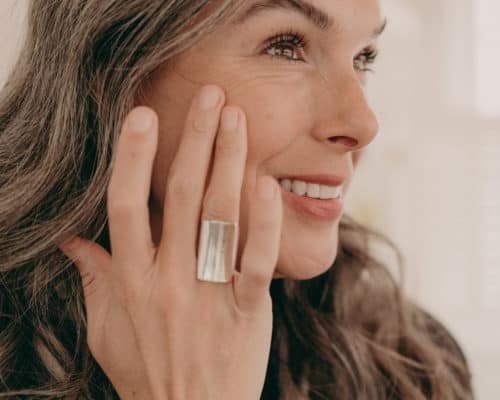
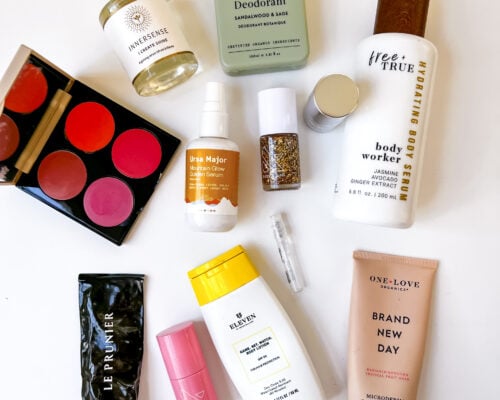
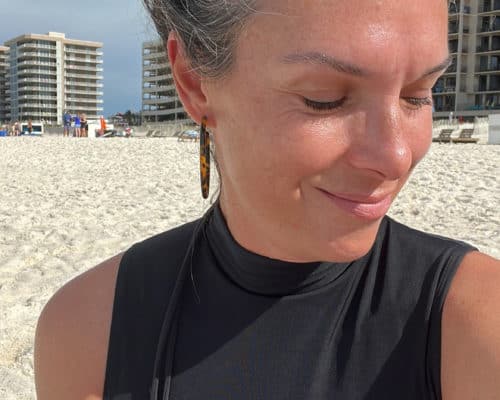
Susana
July 25, 2023I loved your article. I’m European and a producer of natural cosmetics and I think this topic is important and, I don’t know how people are in America but in Europe and in my country, they don’t care much.
Regarding palm oil, I buy it from certified companies that contribute to the non-destruction of trees and to the cultivation of new trees.
I loved.